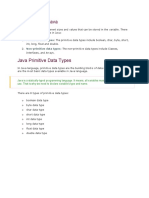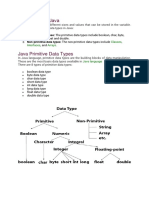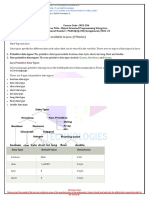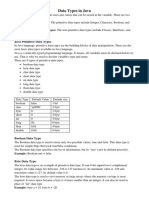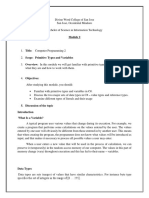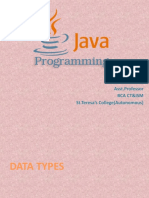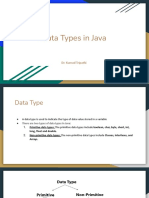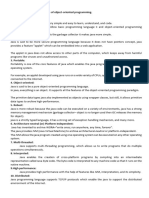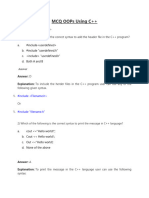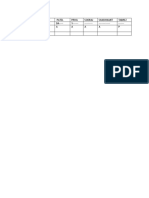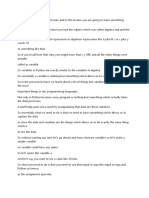0% found this document useful (0 votes)
153 views4 pagesJava Primitive Data Types Guide
The document discusses 8 Java primitive data types - boolean, char, byte, short, int, long, float, and double. For each data type it provides the default value, size/range, and an example. Boolean is 1 bit and stores true/false. Char is 2 bytes and stores Unicode characters. Byte, short, int, and long store integer values of different sizes. Float and double store fractional numbers as single and double precision IEEE 754 values.
Uploaded by
Ashish RajputCopyright
© © All Rights Reserved
We take content rights seriously. If you suspect this is your content, claim it here.
Available Formats
Download as DOCX, PDF, TXT or read online on Scribd
0% found this document useful (0 votes)
153 views4 pagesJava Primitive Data Types Guide
The document discusses 8 Java primitive data types - boolean, char, byte, short, int, long, float, and double. For each data type it provides the default value, size/range, and an example. Boolean is 1 bit and stores true/false. Char is 2 bytes and stores Unicode characters. Byte, short, int, and long store integer values of different sizes. Float and double store fractional numbers as single and double precision IEEE 754 values.
Uploaded by
Ashish RajputCopyright
© © All Rights Reserved
We take content rights seriously. If you suspect this is your content, claim it here.
Available Formats
Download as DOCX, PDF, TXT or read online on Scribd
/ 4

